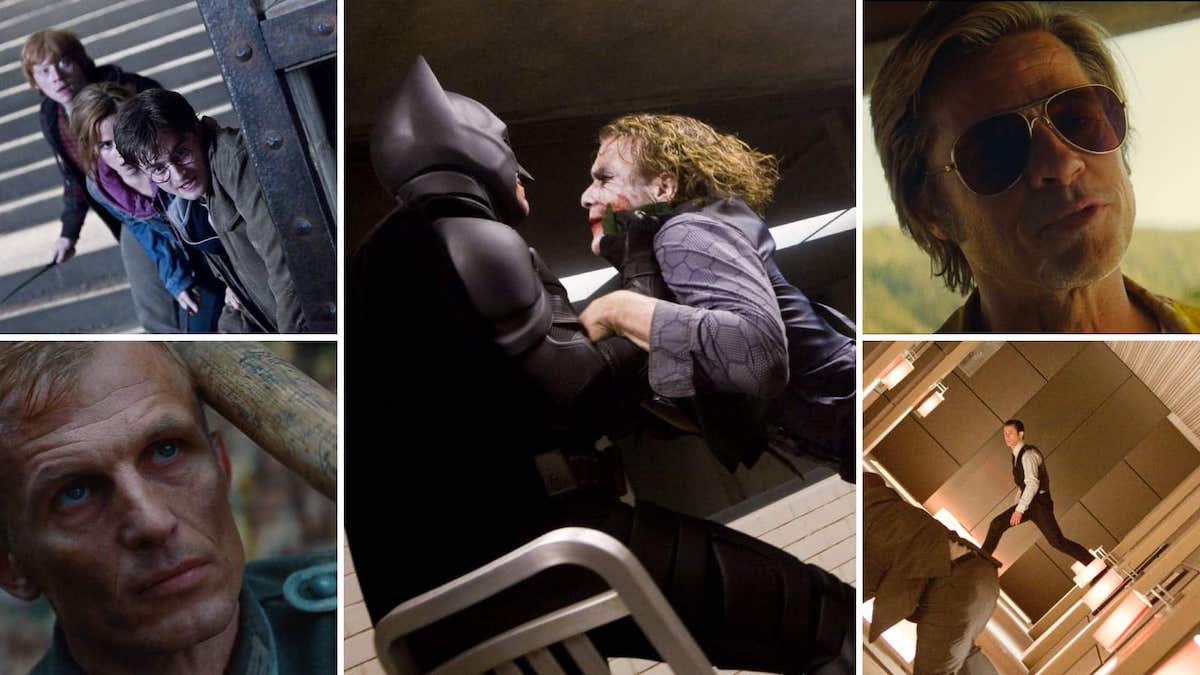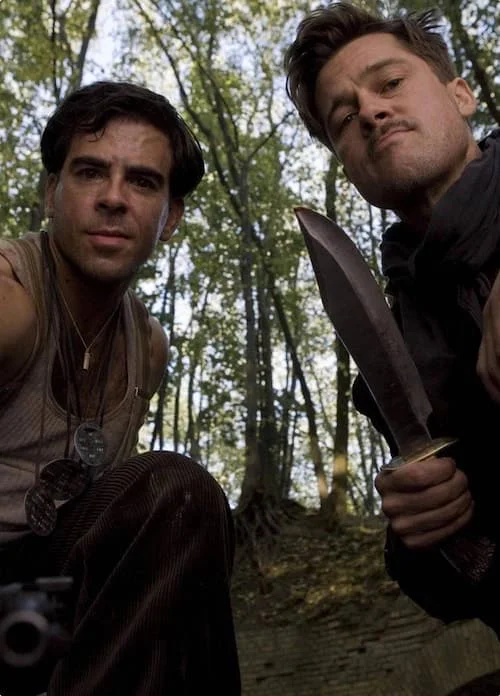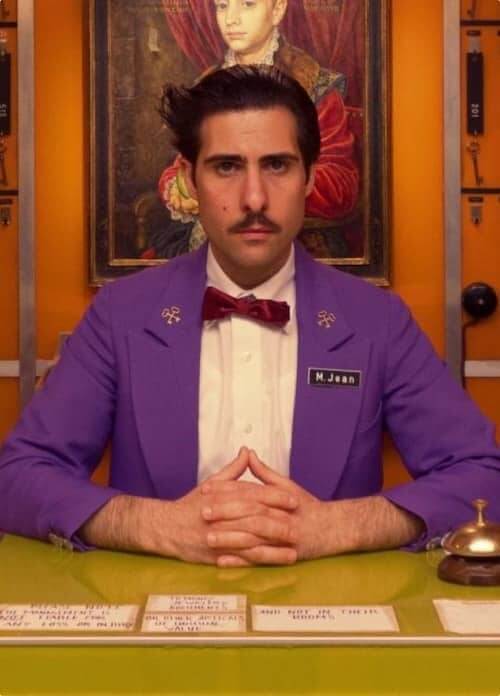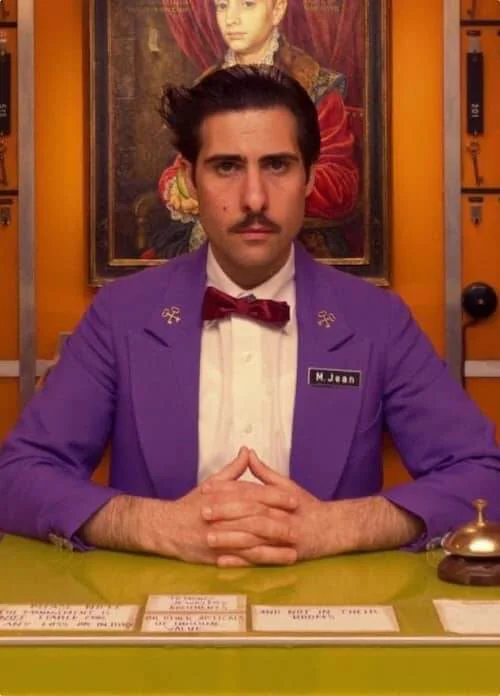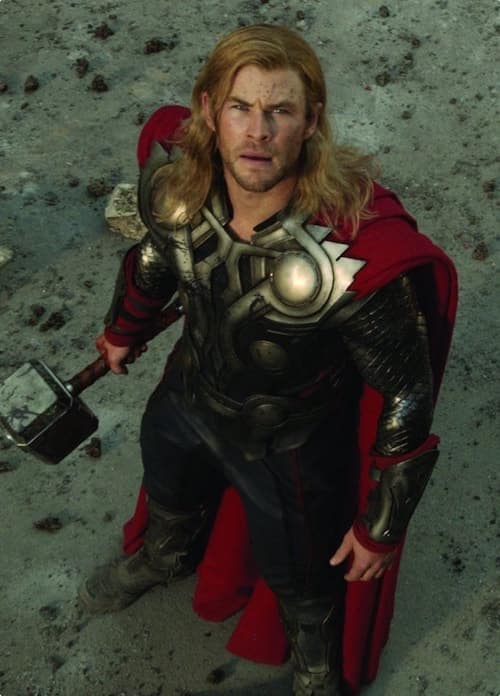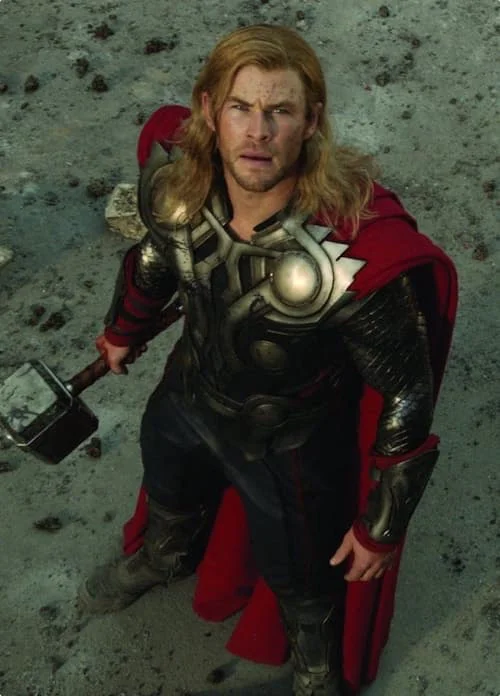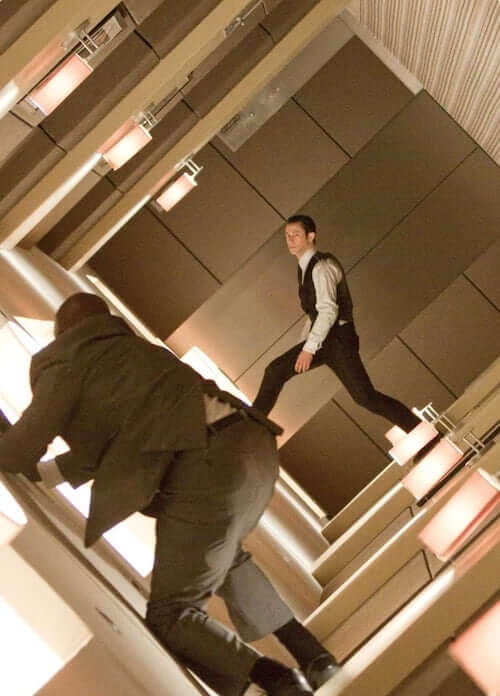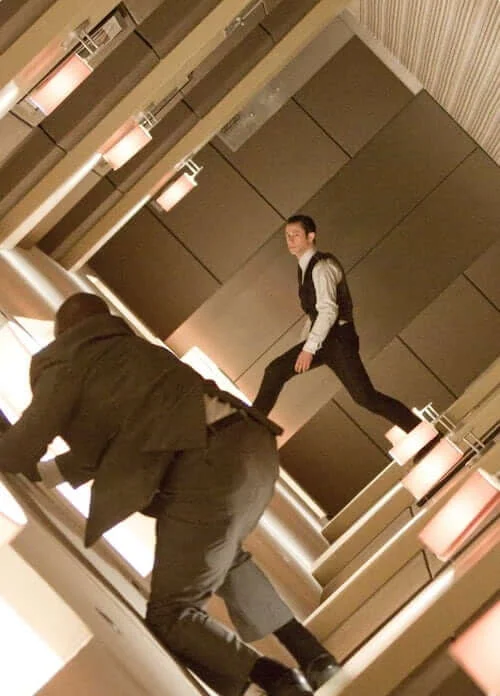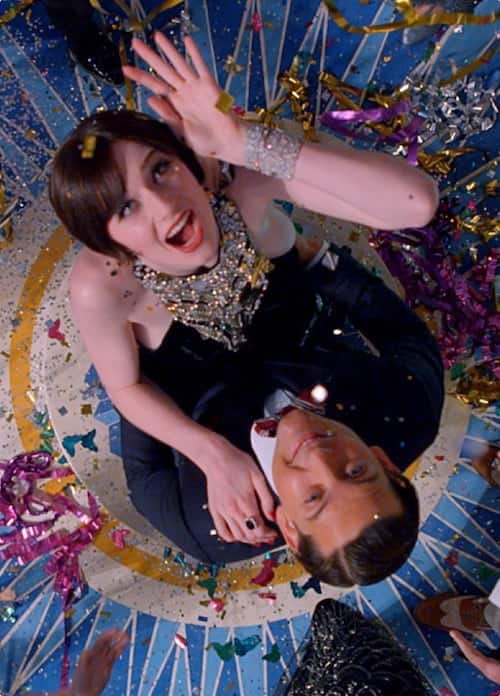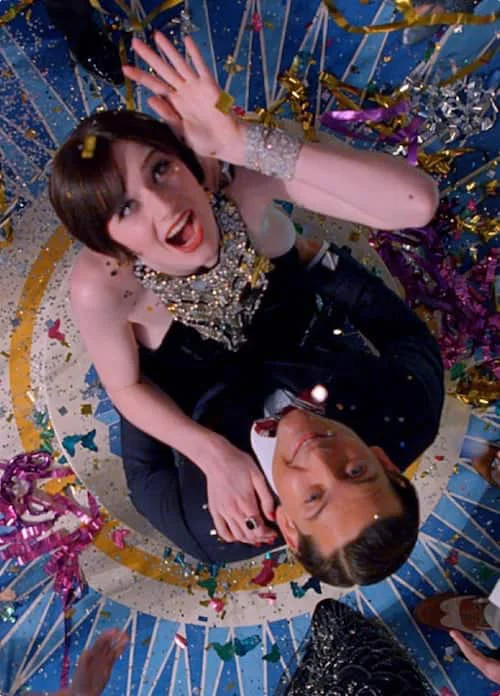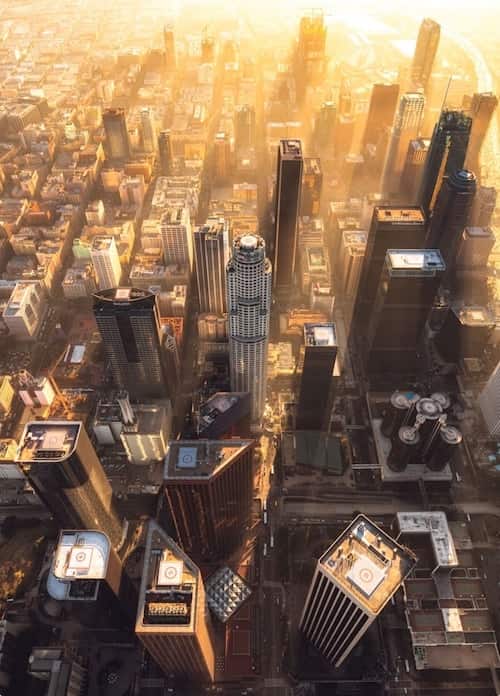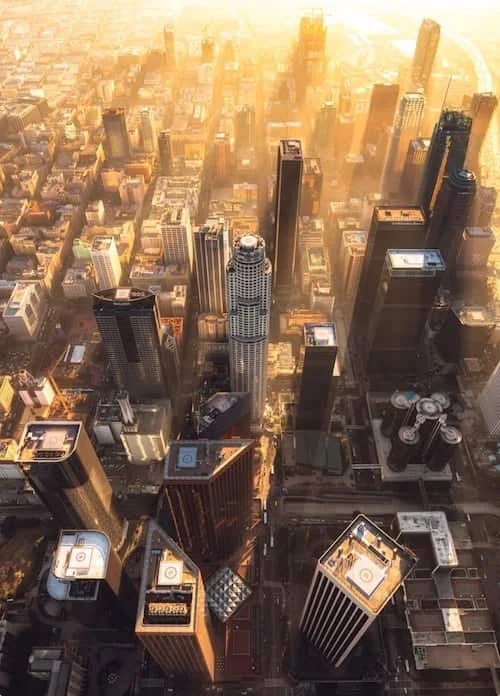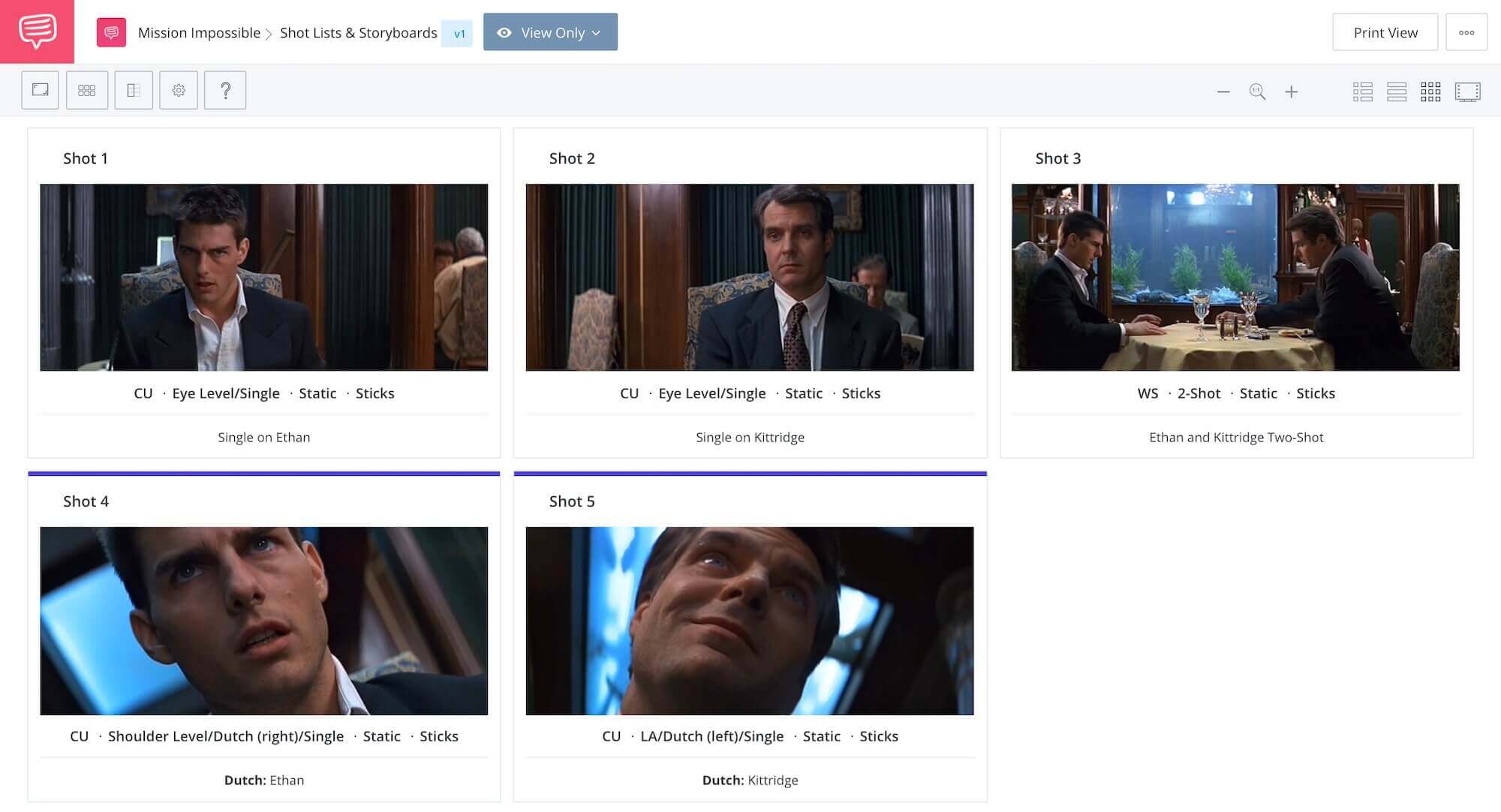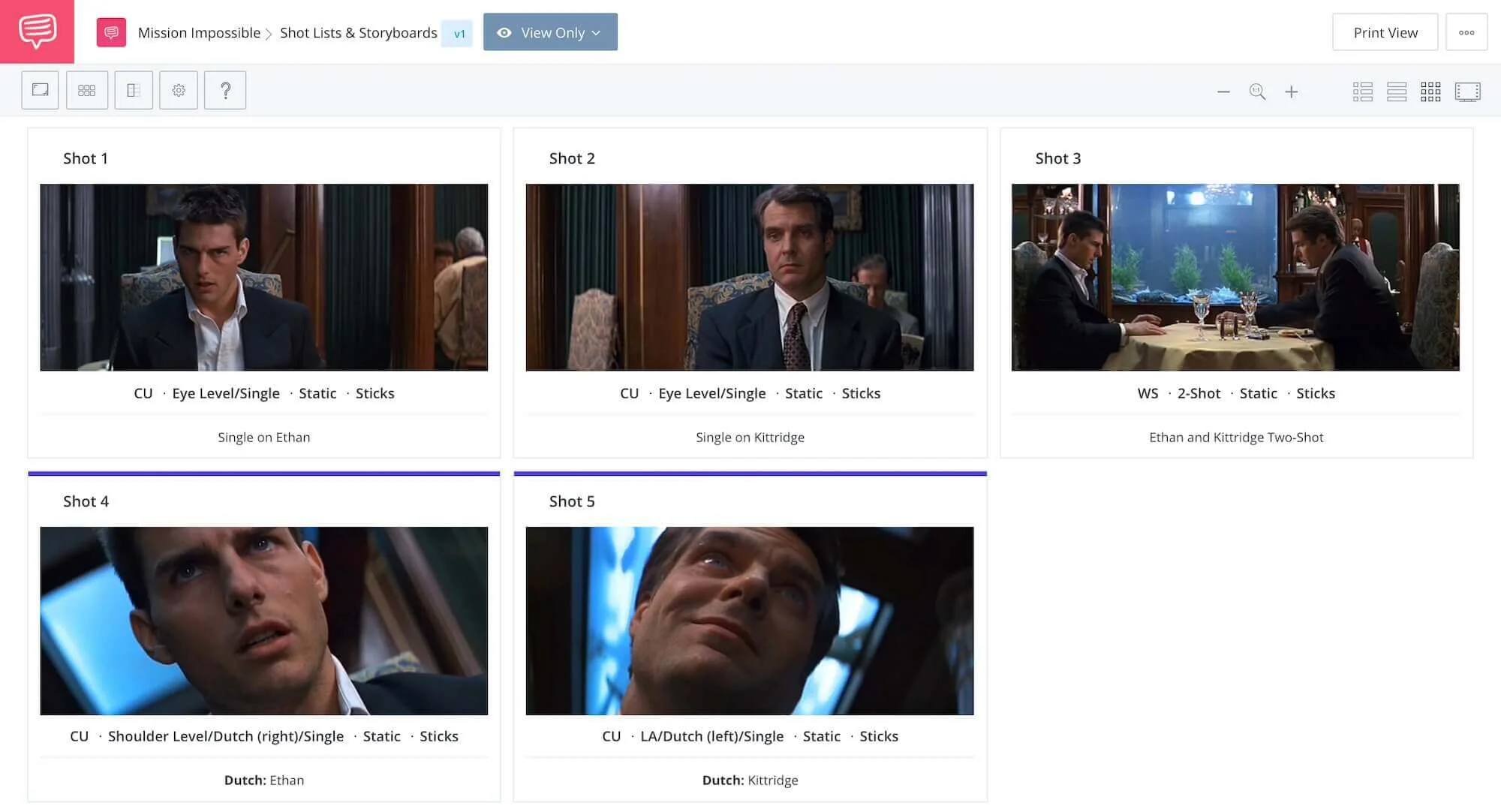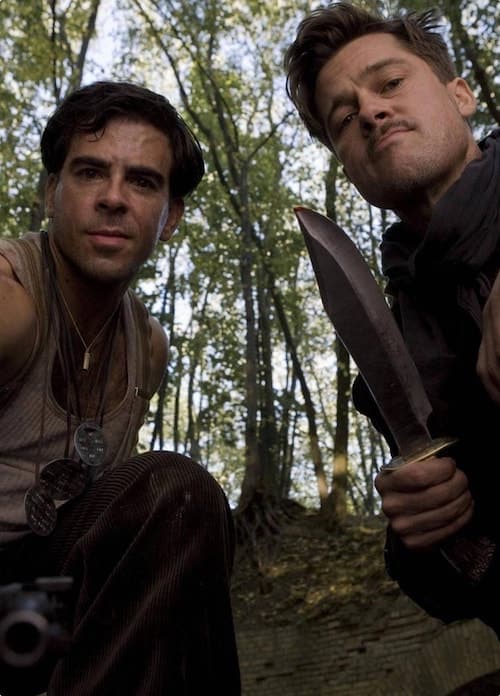There will be moments in any good story where the main character is under duress. Where something is… wrong. How does a filmmaker convey this? With a Dutch angle. A Dutch angle is a classic cinematic technique to create unease inside the mind of the viewer. In this post, we’ll break down Dutch angles so that you can use them in your next project.
How to Achieve The Dutch Angle Shot
dutch angle shots
Dutch angle basics
How do you enhance an unsettling moment in your script through cinematic techniques and visual language? One great way to do this is with a Dutch Angle. We'll start with a Dutch angle definition before moving onto canted angle examples and how you can identify and enhance moments in your work. So, what is a Dutch angle camera shot?
DUTCH ANGLE Camera Shot DEFINITION
What is a Dutch angle?
A Dutch angle (known as a Dutch tilt, canted angle, or oblique angle) is a type of camera shot that has a noticeable tilt on the camera’s “x-axis.” It’s a camera technique that was used by the German Expressionists in the 1920s — so it's not actually Dutch. Directors often use a Dutch angle to signal to the viewer that something is wrong, disorienting, or unsettling.
What to consider when planning a Dutch angle shot:
- The degree of your tilt
- The depth of field for your shot
- The vertical level of your view
An oblique angle of the camera is just one of the many camera angles possible and can even be combined for additional effect. Here's a rundown of every camera angle, how they work, and whey they might work best in your next shot list.
Ultimate Guide to Camera Angles • Subscribe on YouTube
As we explore the canted angle in detail, keep in mind that the Dutch angle shot does not live in a vacuum. Yes, Dutch angle shots look awesome and feel stirring. But it’s critical to introduce your canted angle in the right place, at the right time.
Consider the Dutch tilt within the context of your entire shot list. Every shot matters based on the relationship with the other shots in the scene. An oblique angle can skew the audience’s perspective, so they’re in the same mindset as the characters they’re watching on the screen.
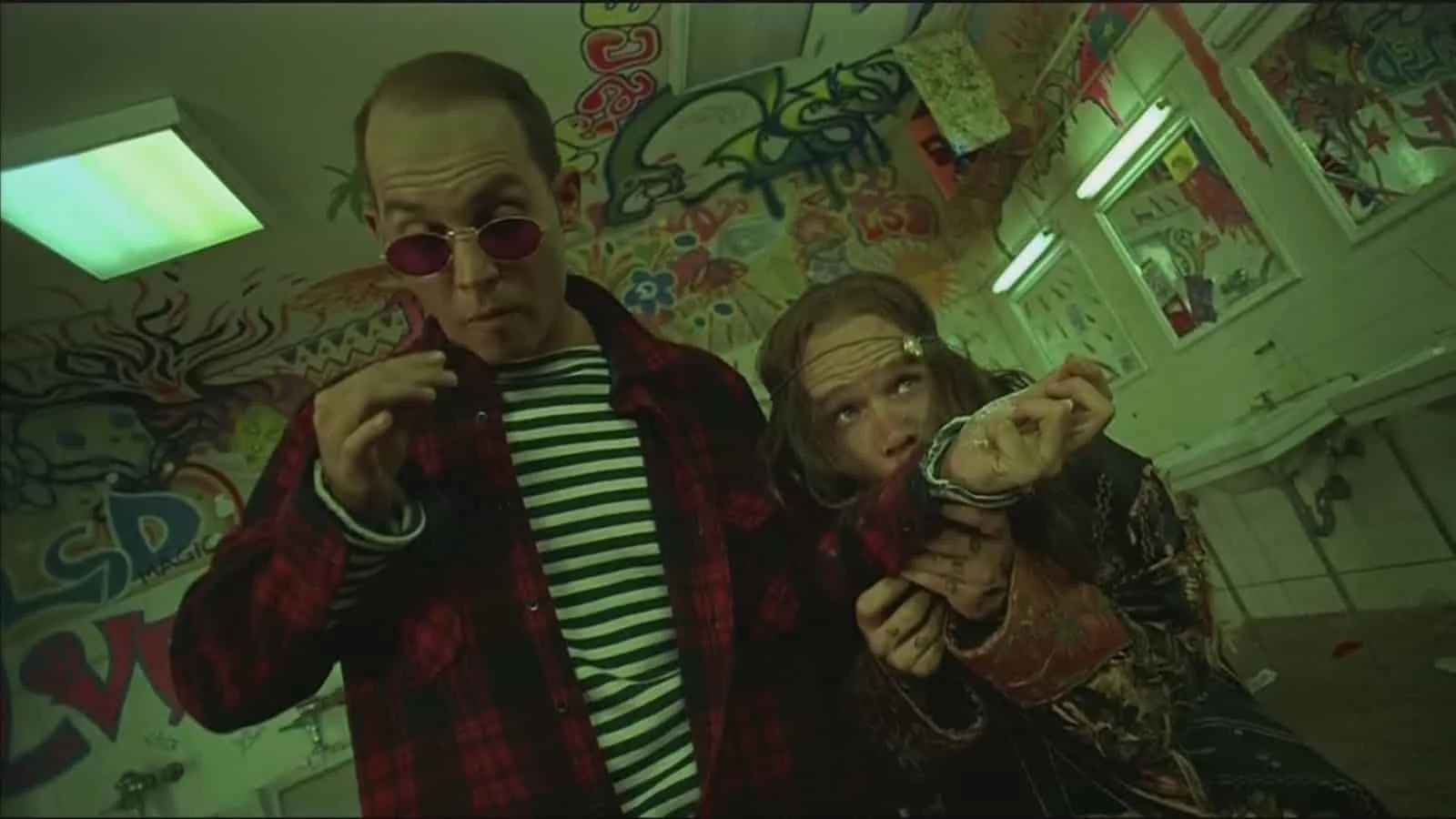
Dutch angle camera shot from Fear and Loathing in Las Vegas
Again, wrong doesn’t mean immoral or bad, it just means different from the orthodox way of perceiving information. You’re not judging the behavior, just exposing the abnormality.
The Dutch angle shot used to be called “The German Angle” because this camera angle came to prominence in early German Expressionism. It should really be called a "Deutsch" angle but somewhere along the line it became "Dutch."
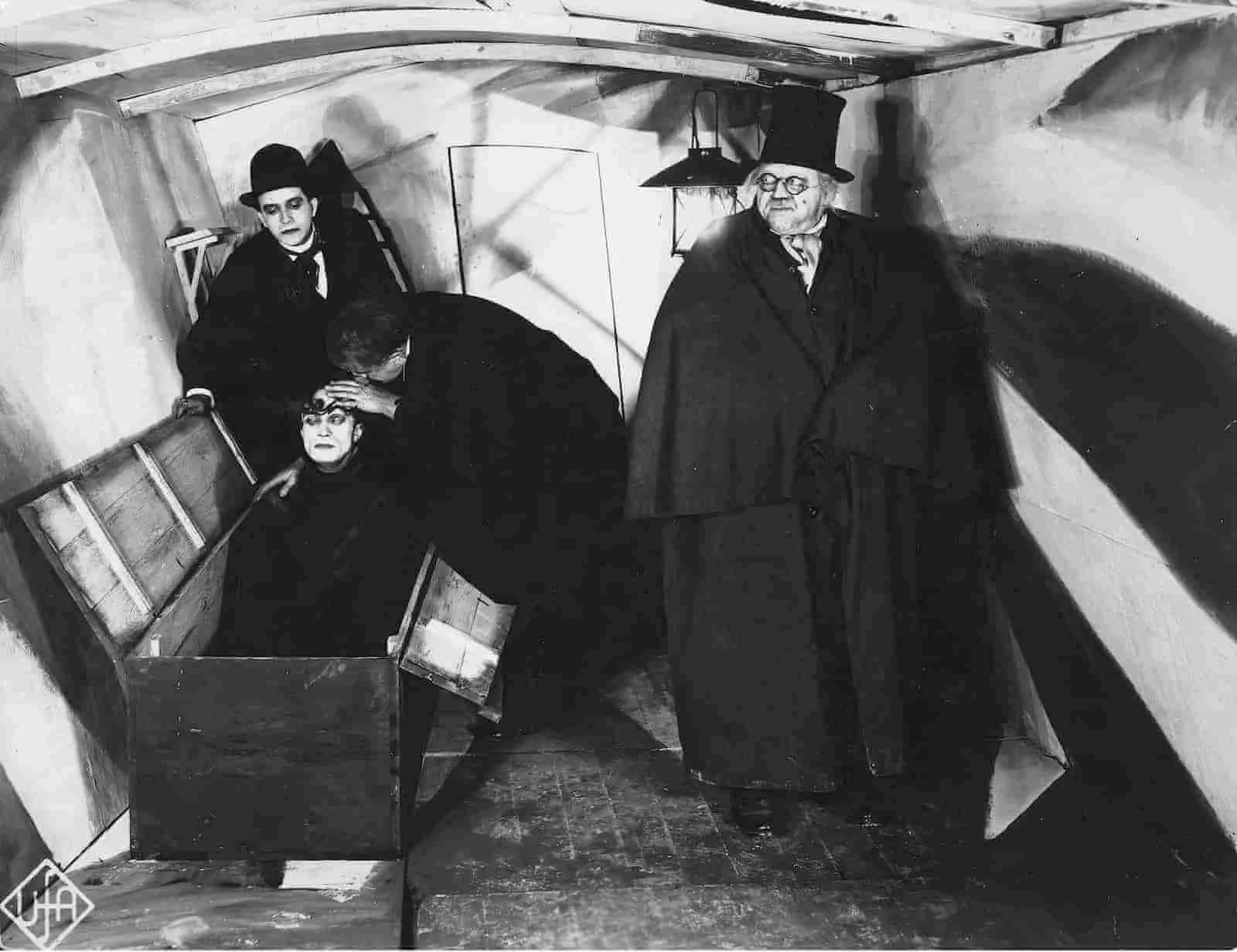
The Cabinet of Dr. Caligari and the Dutch tilt
As film evolved, and German directors and cinematographers came to Hollywood, they brought the Dutch angle with them. It soon became part of mainstream Hollywood, especially in Film Noir, which also came out of German Expressionism.
dutch angles in movies
Dutch angle examples
Let’s go over some Dutch tilt film uses. Are you making a movie with a non-traditional villain and want to let the audience know how skewed their vision of the world is?
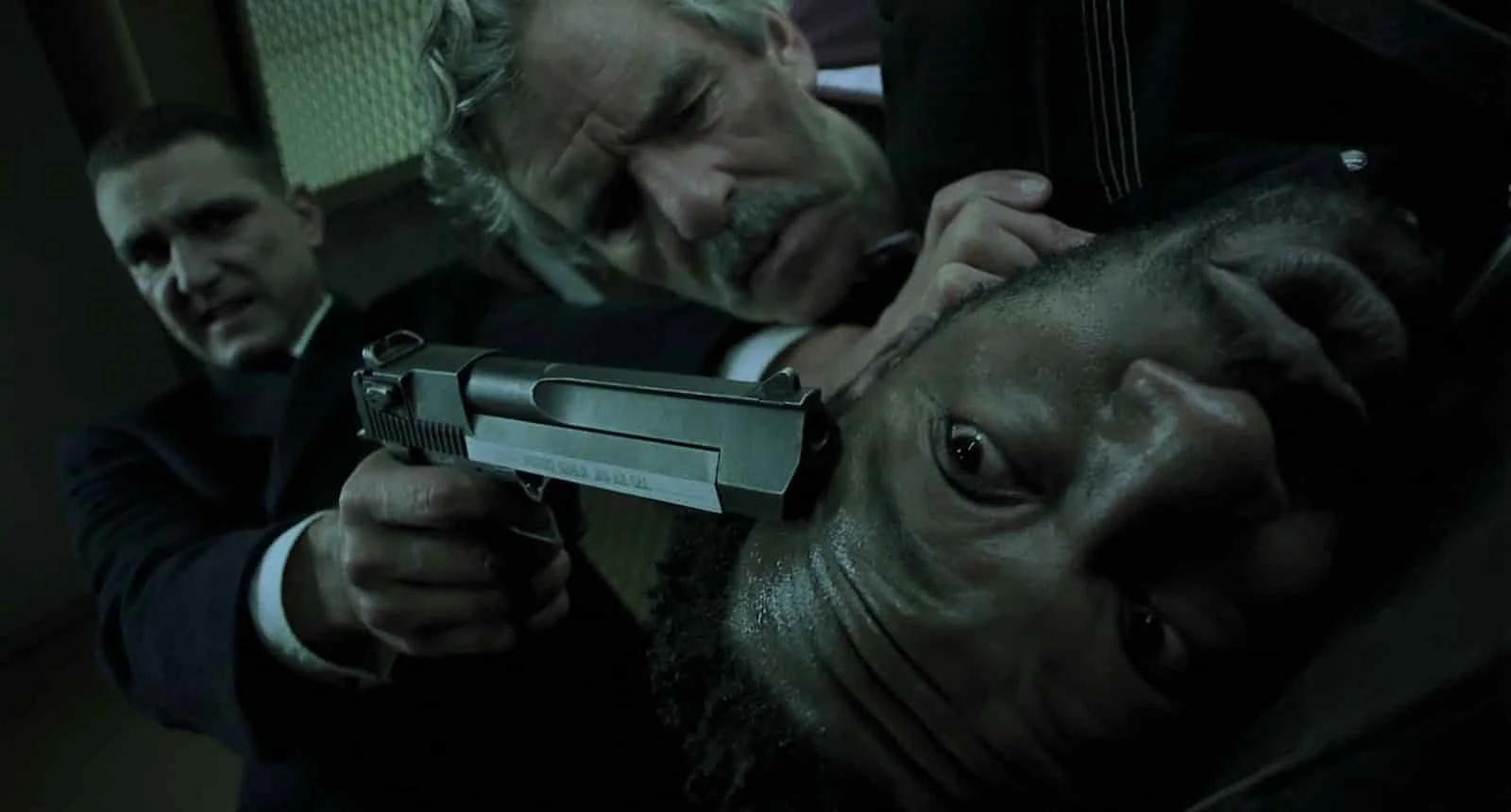
Guy Ritchie plays with angles in Snatch
Quentin Tarantino uses Dutch angles all the time, even when his protagonists have the upper hand, like in this shot from Inglorious Basterds. We know something bad is about to happen here — and the oblique angle is there is to seal the deal.
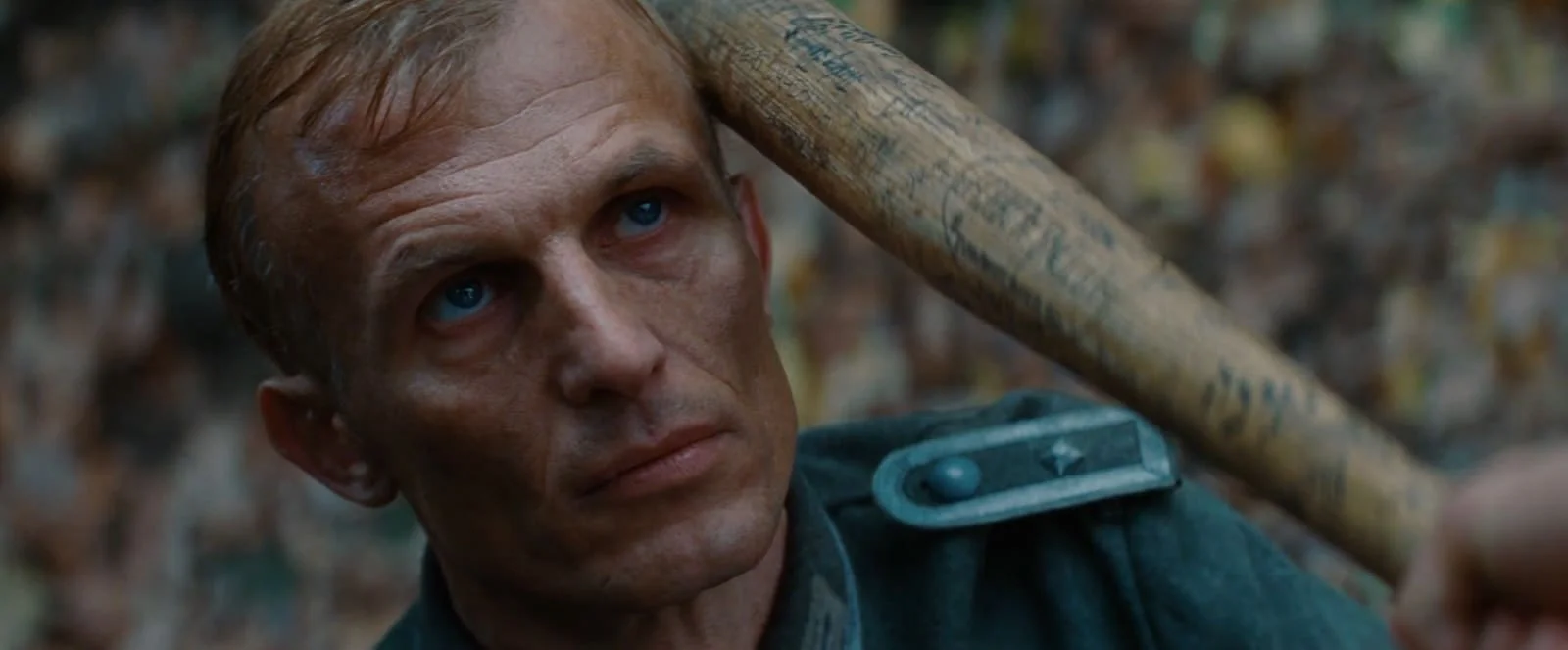
Dutch angle camera shot example in Inglorious Basterds
Directors have used the Dutch angle to create a feeling, and to give the viewer a sense that the world is figuratively warped…But what if your scene actually involves a warped world?
Inception uses the Dutch angle much more literally than usual, and in many cases your POV shots will have a natural Dutch angle applied to give us the sense that we’re using the character's eyes.
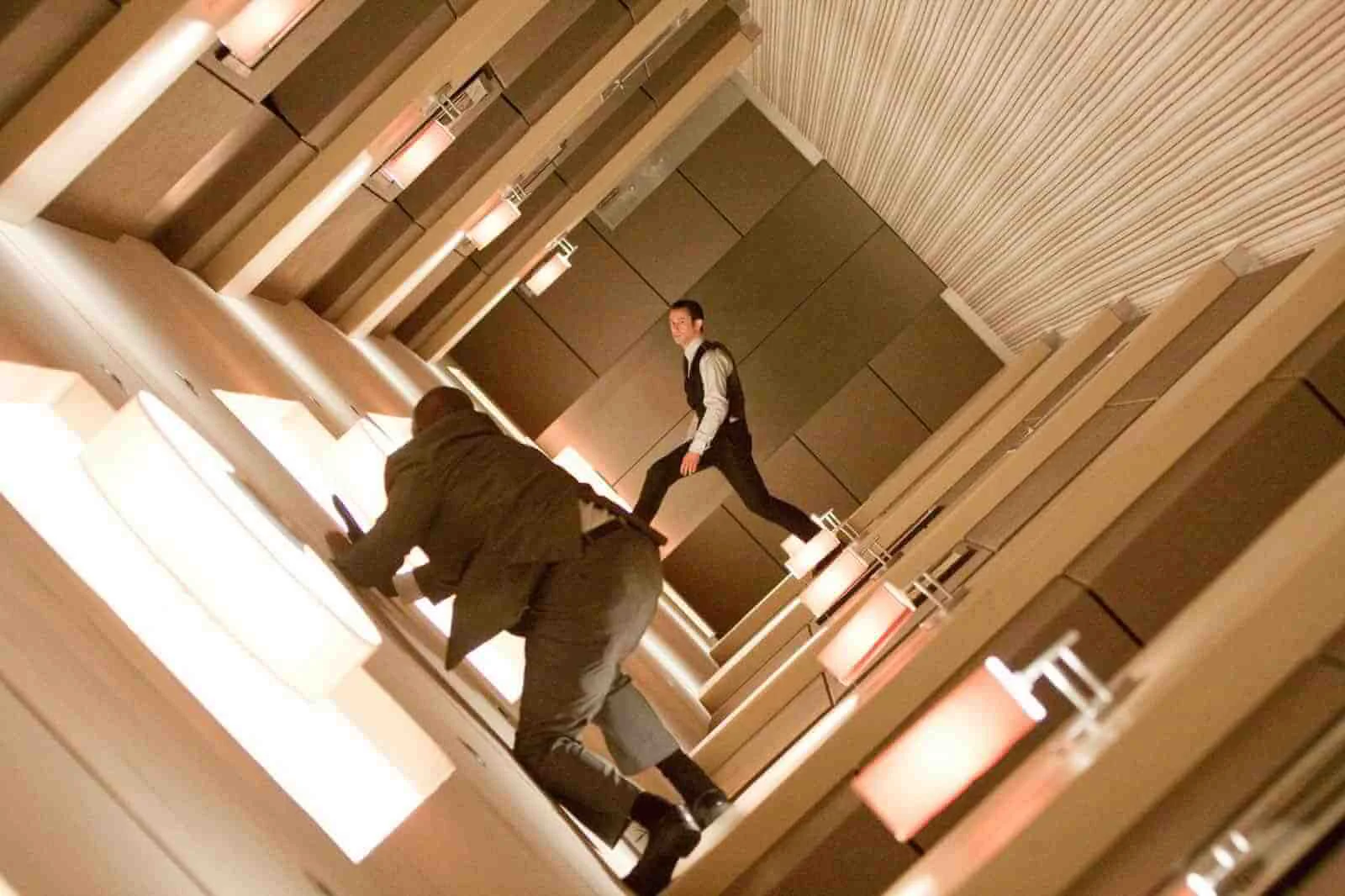
Dutch angle shot example in Inception
You can use your Dutch angles in exciting scenes, like the one below from Harry Potter, to help raise the stakes of the action in progress.
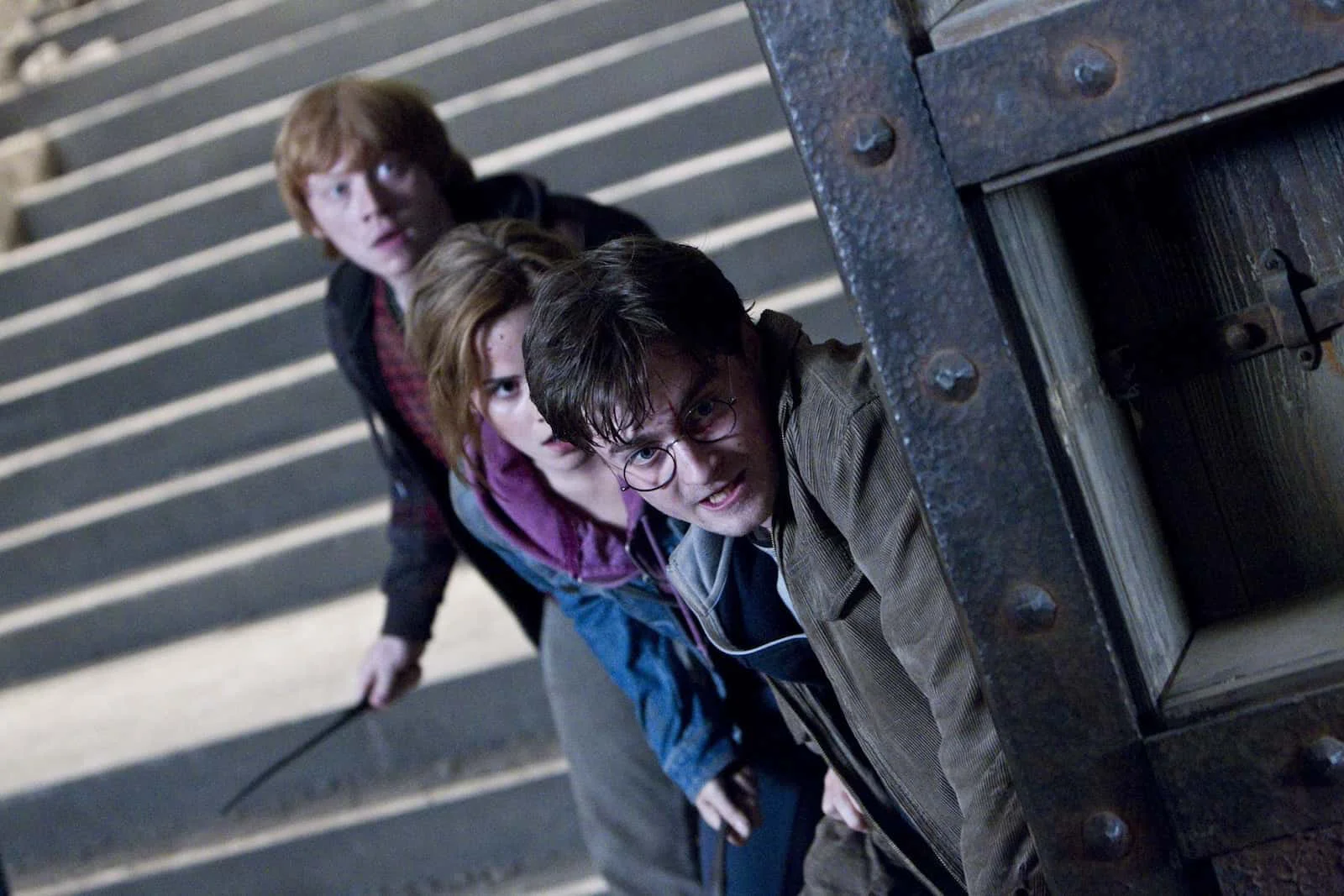
Dutch Angle example in Harry Potter
CAMERA ANGLES
Get Inspired. Explore More Angles.
Explore the different types of camera angles, and learn how to combine them with other shot specs for visual storytelling.
Different Types of Camera Angles
Now that we have some background and seem some examples of the Dutch angle, let's move onto how a master filmmaker like Brian De Palma uses them. We're going to look at a scene from Mission: Impossible when Ethan Hunt realizes he's become the target.
DUTCH TILT
Identify the moment in your script
When you read through a good script, you will find a moment where everything changes. Where something big happens. These are the moments where your film literacy and knowledge of filmmaking techniques will come in handy.
De Palma finds the moment in Mission: Impossible at the climax of Act I. We brought the Mission: Impossible script into StudioBinder's screenwriting software so we can see how you how to identify the moment and share it with your collaborators.
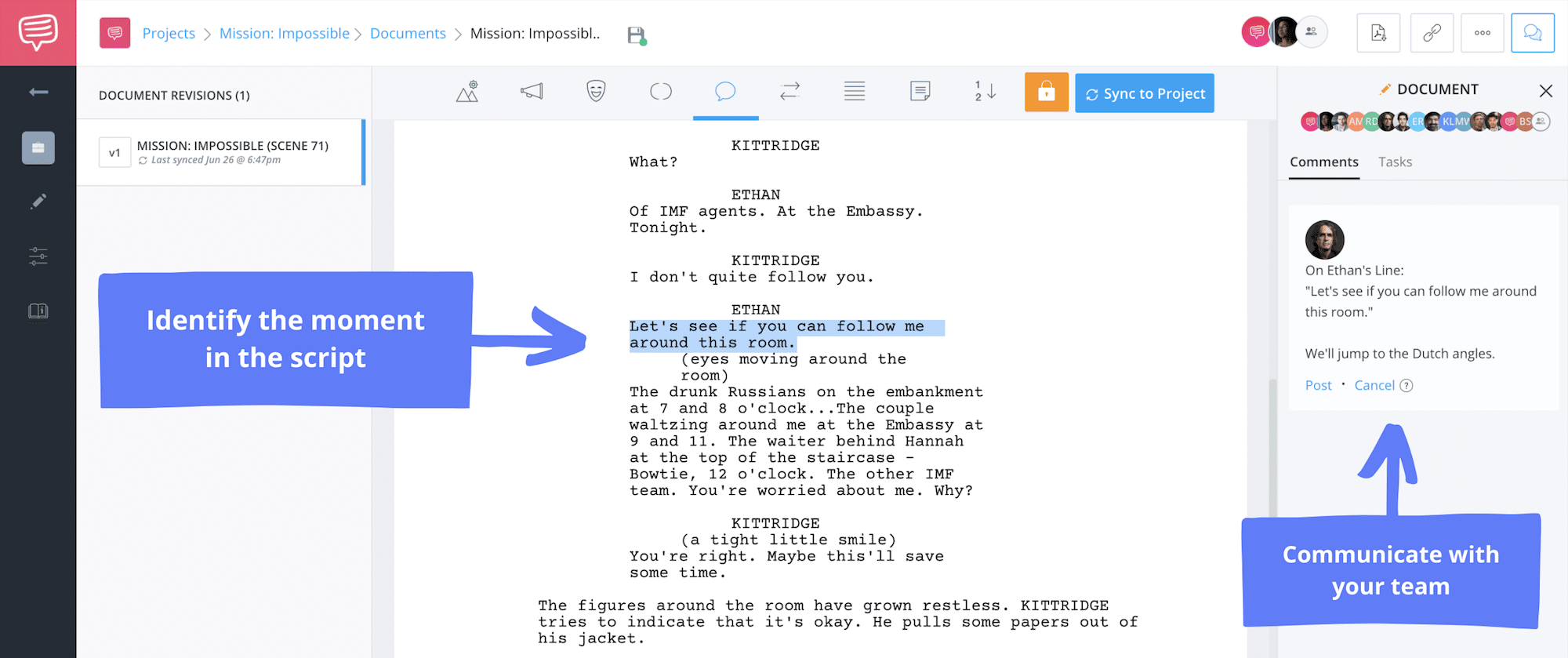
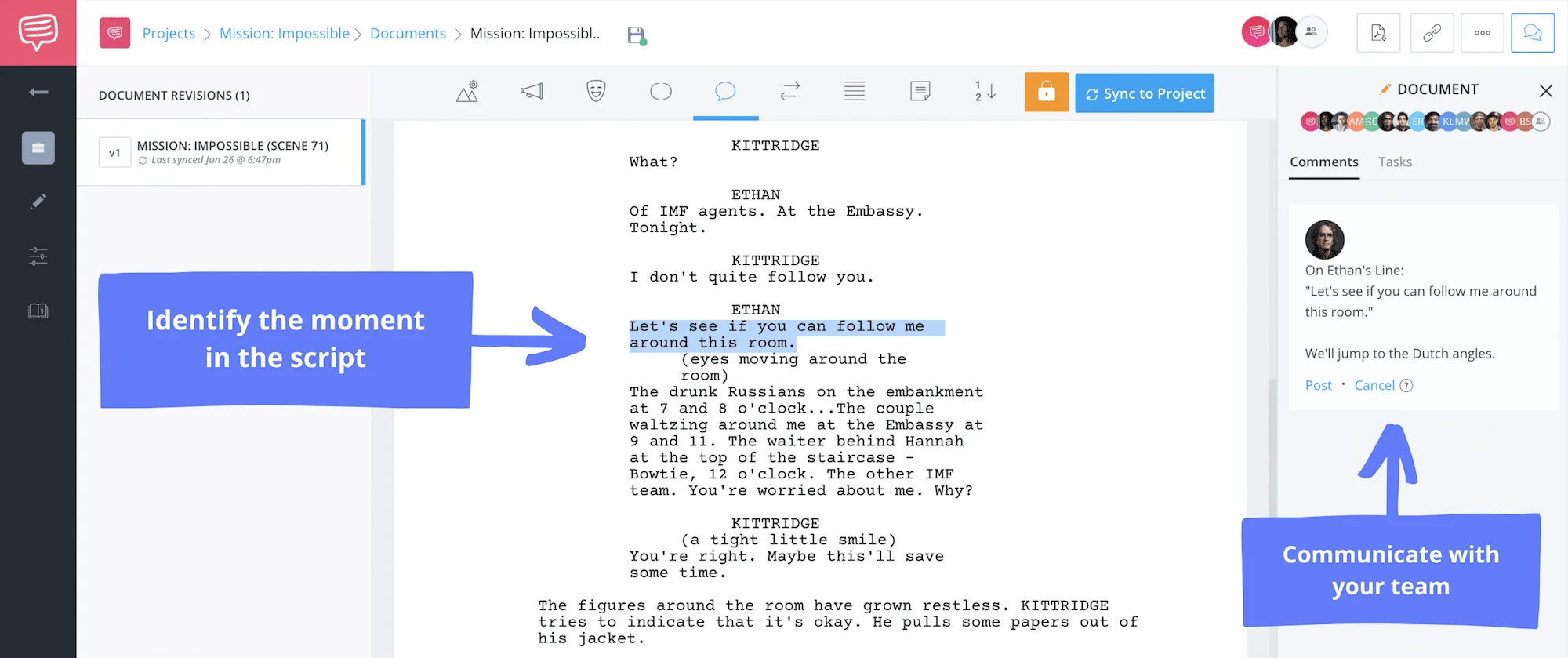

Call out the ideal moment to your team
In this scene, Ethan Hunt arrives at a restaurant in Prague. His entire team has just been murdered, and he meets with his boss, Kittridge. Kittridge thinks Ethan murdered his own team on behalf of an arms dealer. Ethan doesn’t know this yet, and neither does the viewer.
Kittridge has also brought a second team of IMF agents to the meeting, which he has failed to mention to Ethan. They have a brief conversation until Ethan notices something is…wrong. Let's watch the scene and pay attention to the moment De Palma shifts the tone with a precisely-placed Dutch tilt.
Focus Dutch angle scene from Mission: Impossible
This moment marks a big shift in both the scene and in the film, and De Palma knows to signal this to the viewer. He did the work, analyzed his script and story, and found a moment to effectively use a Dutch angle.
Do you have a big plot shift or revelation like Ethan’s in your project?
If so, you’ll want to call it out. When you create a script breakdown.
While we’re talking about the script, the second IMF team is casually mentioned as “a dozen restaurant patrons.” Their identities are only brought to our attention once Ethan points them out.
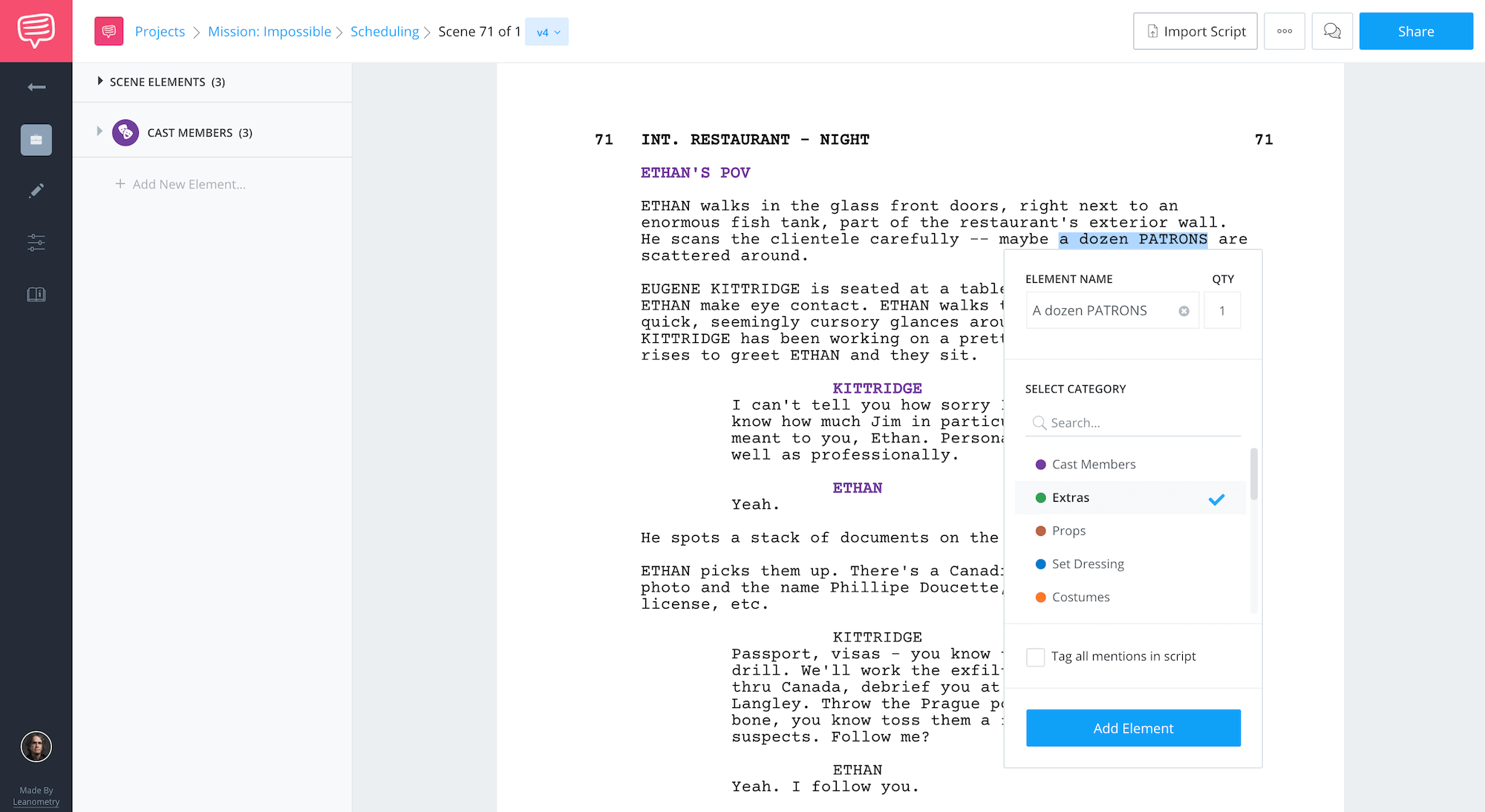
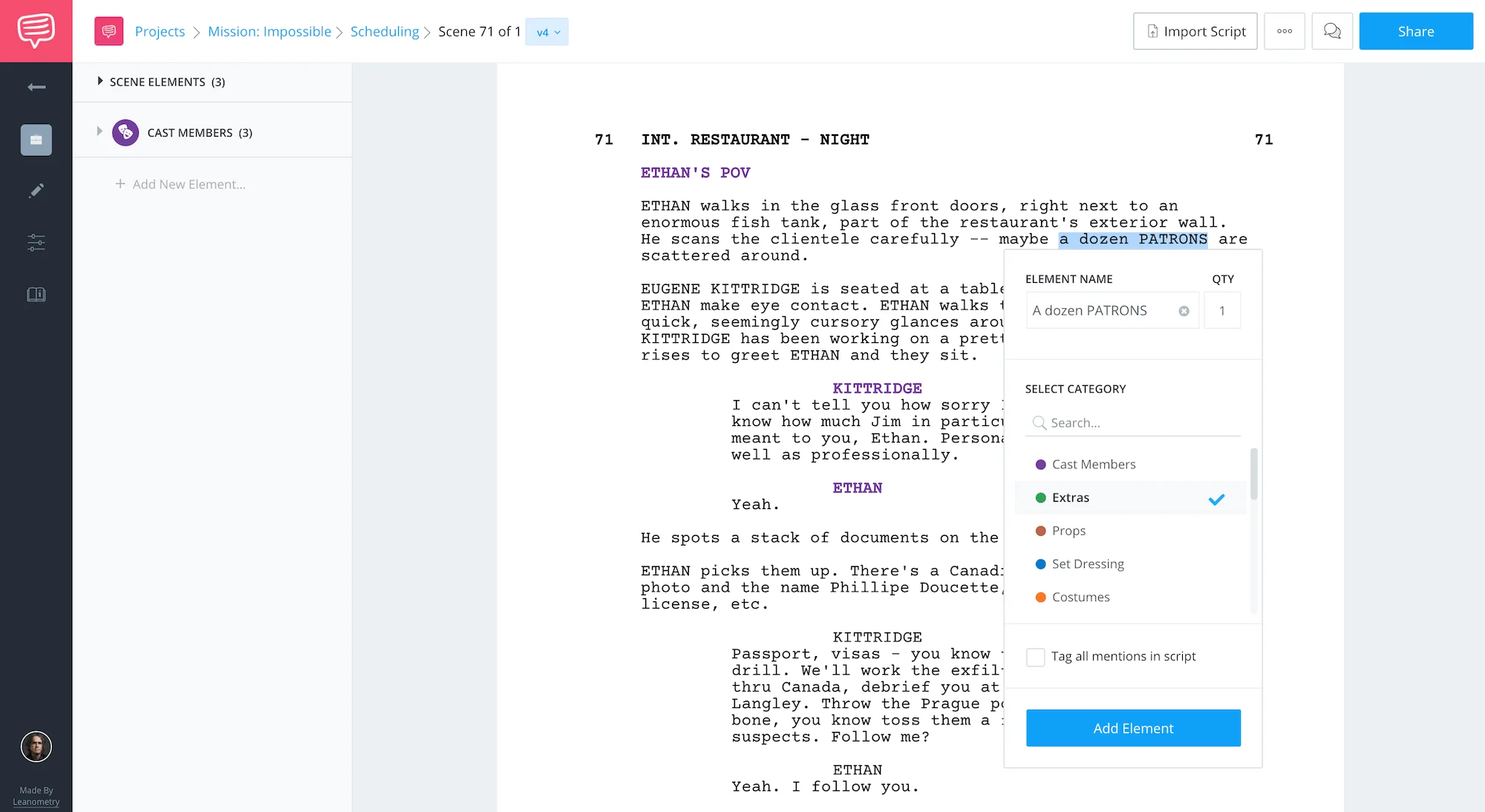

Tagging "patrons" as extras
This may be just a short sentence, but how we decide to reveal them will impact our shot list. We need to label “Dozen Restaurant patrons,” and add a note to remind you of their importance later.
It’s also required that these be the same actors from previous scenes, just in different wardrobe and pretending to be different people.
So take note of that as well.
RELATED POSTS
dutch angle shot example
Consider the entire scene
De Palma doesn’t just find the moment in the script to use a Dutch angle, but rather he finds the precise moment within the scene. Then, he uses his shot lists and storyboards to indicate when he’d like to deploy this cinematic technique.
The reason Dutch angles work so well in this scene is that they’re preceded by shots with standard composition.
Switching from normal to extreme framing creates an even larger shift within the scene, and we see this transition play out in real time. Otherwise, you end up with Dutch angle overdose, and they will start to lose their impact.
De Palma engages the viewer because he allows them to assemble the puzzle on their own. Now, let's dive deeper into how this scene was exactly shot listed.
Shot 1:
A MCU (medium close-up) on Ethan. This shot is slightly below eye level and a single. When we use the term “single,” we mean that the shot is not framed OTS (over the shoulder shot) of another character in the scene.
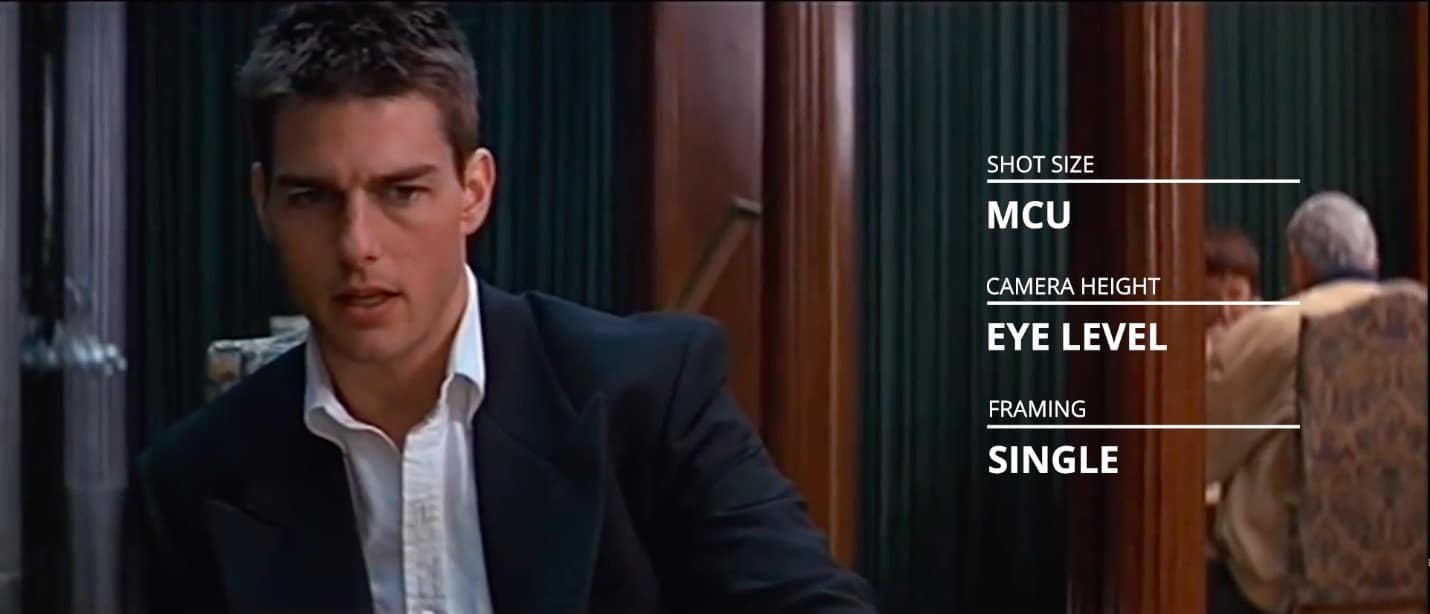
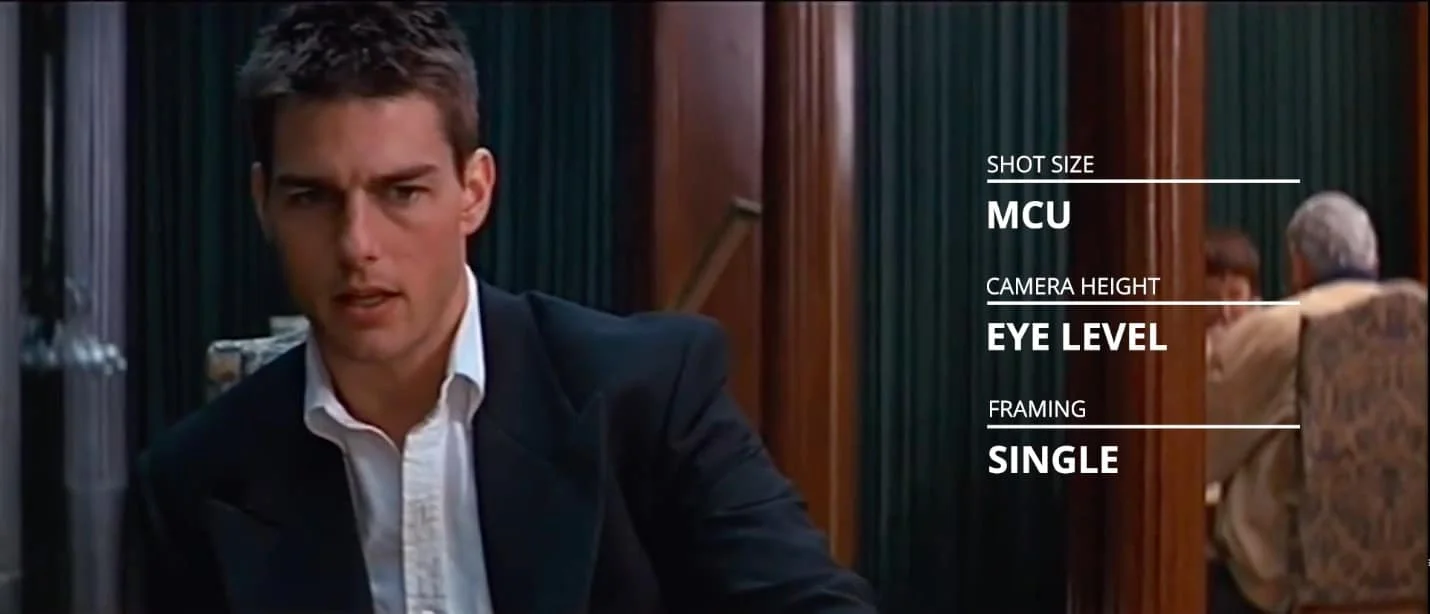

MCU Camera Shot composition in Mission: Impossible
De Palma’s use of an MCU single works perfectly for this moment, because Ethan is isolated, alone, and disconnected. If Kittridge had his shoulder in the frame, the visuals would suggest a sense of connection between these characters.
Shot 2:
Kittridge is also framed in a MCU but there is also a member of the second IMF team in the background — keep that in mind for later.
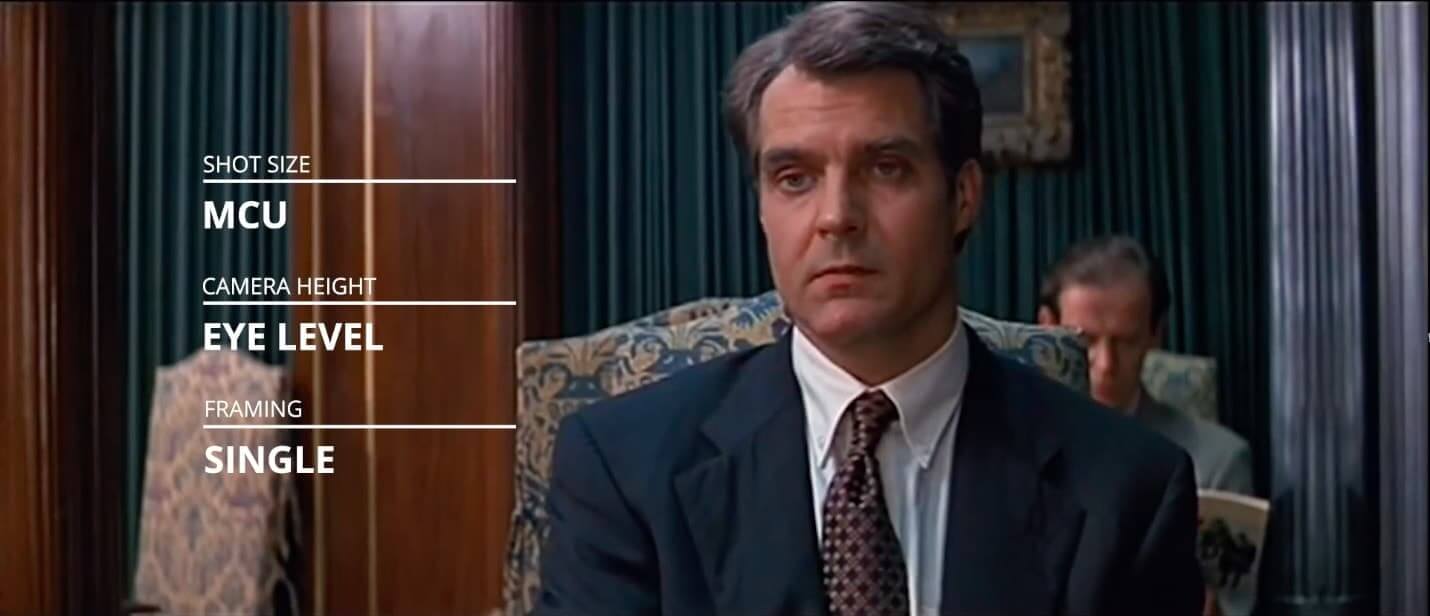
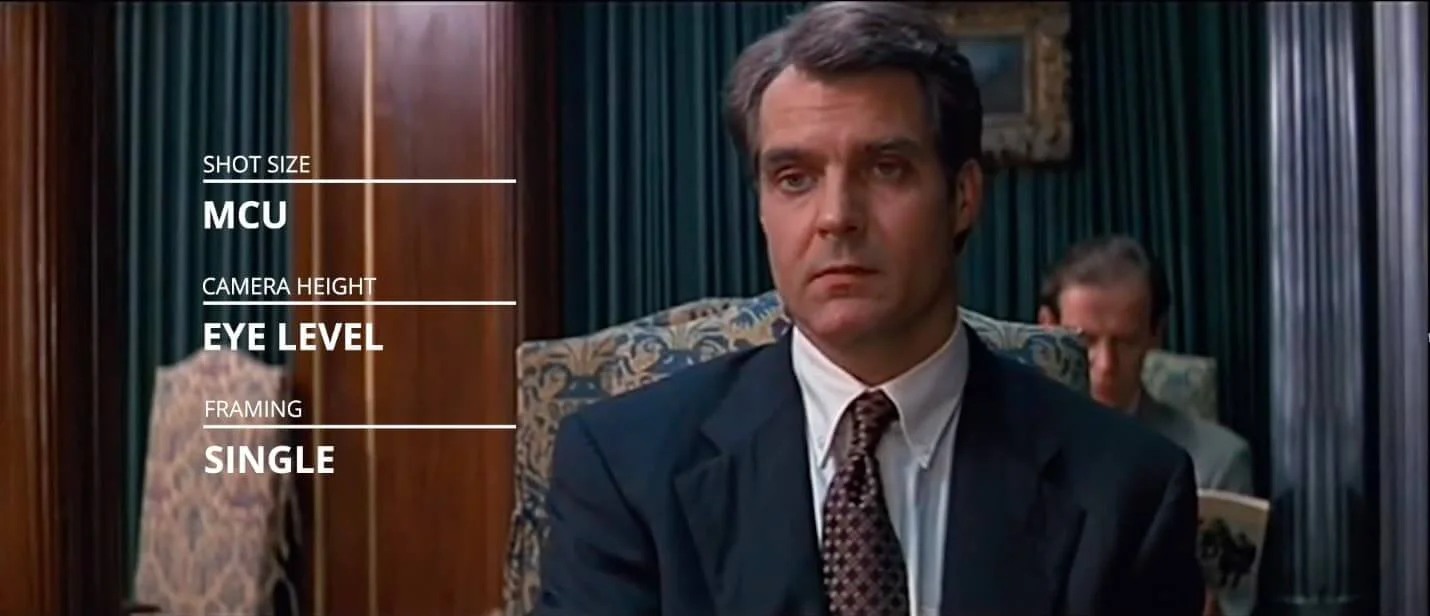

Standard MCU Camera Shot composition of Kittridge
This shot composition suggests these characters feel differently from one another, but it does not suggest any danger or disorientation. In short, we still don’t feel as though anything is wrong.
Shot 3:
We finally get to see these characters connect for the first time. De Palma shows us this brief moment by switching to a medium two-shot.
The transition to the two-shot is motivated, because it allows us to see Kittridge pass the documents to Ethan, but we also gain this slightly disarming moment as suggested by De Palma’s choice of framing.
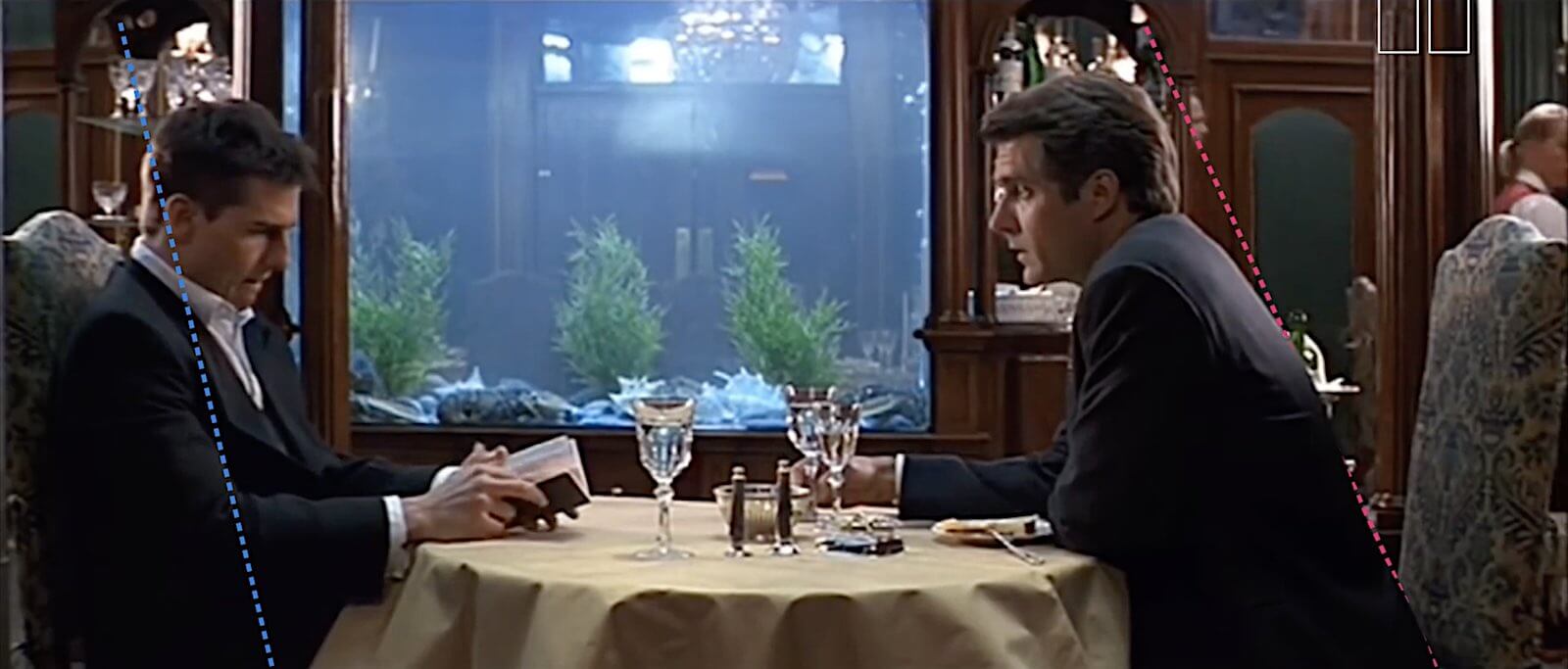
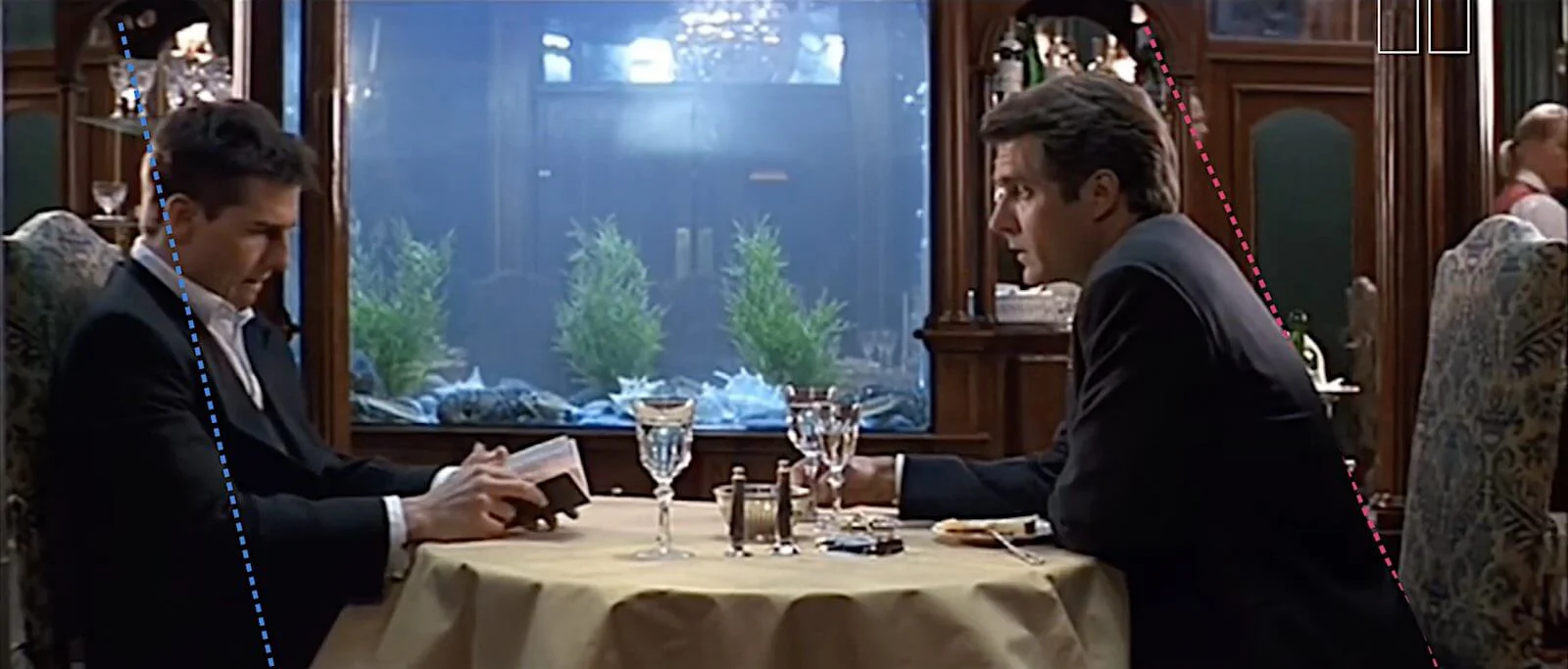

Two-Shot in Mission Impossible
Kittridge leans forward, and he stays forward, which adds an imposing contrast to Ethan’s slumped, de-powered form. Take note that yet another IMF agent is in the frame. Where? Right behind Kittridge, again.
De Palma places these IMF agents directly over the shoulder of Kittridge in both of these shots, because visually it suggests they’ve “got his back.”
We continue to cut from Shot 1 back to Shot 2 until Ethan asks, “Why the other team?” When Kittridge lies to him, there is a power shift. Ethan’s view of the meeting has changed.
So, De Palma changes the visuals...with a Dutch tilt.
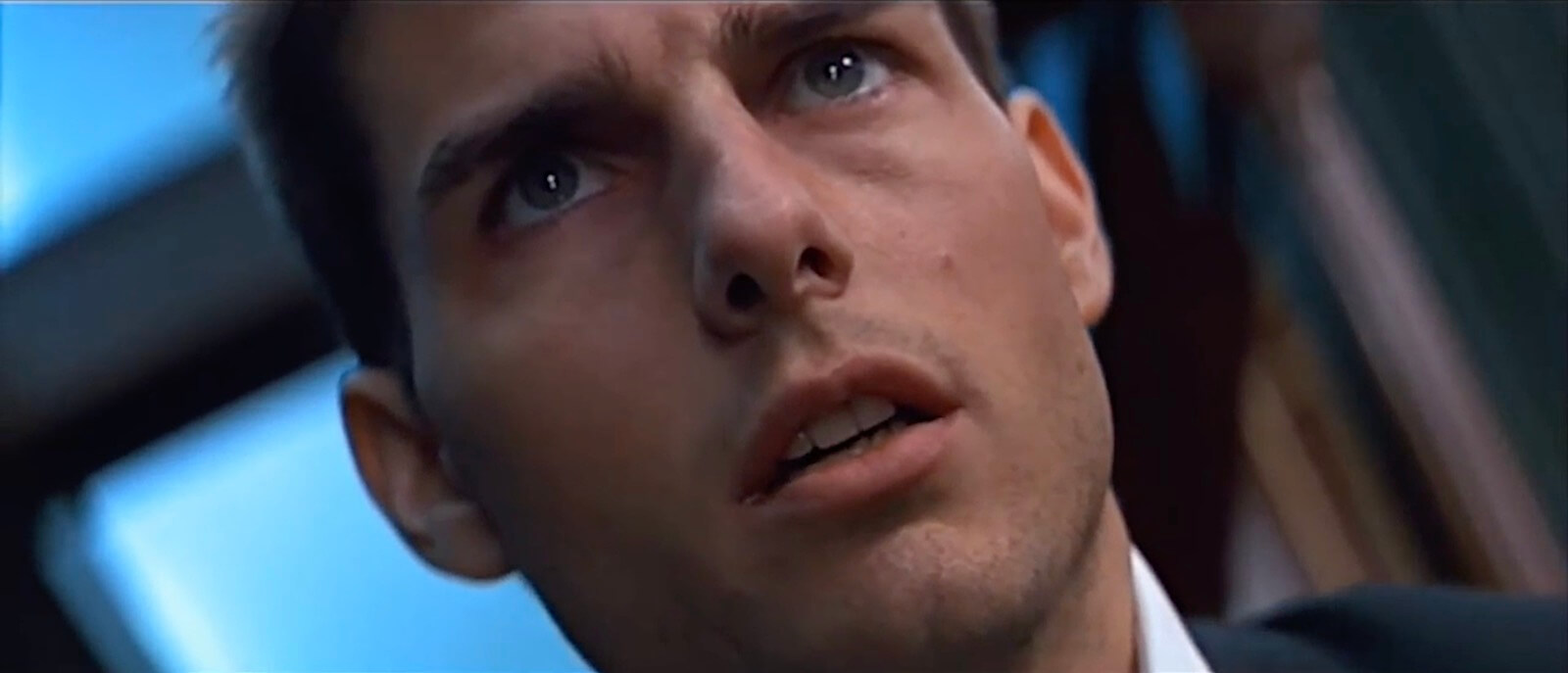
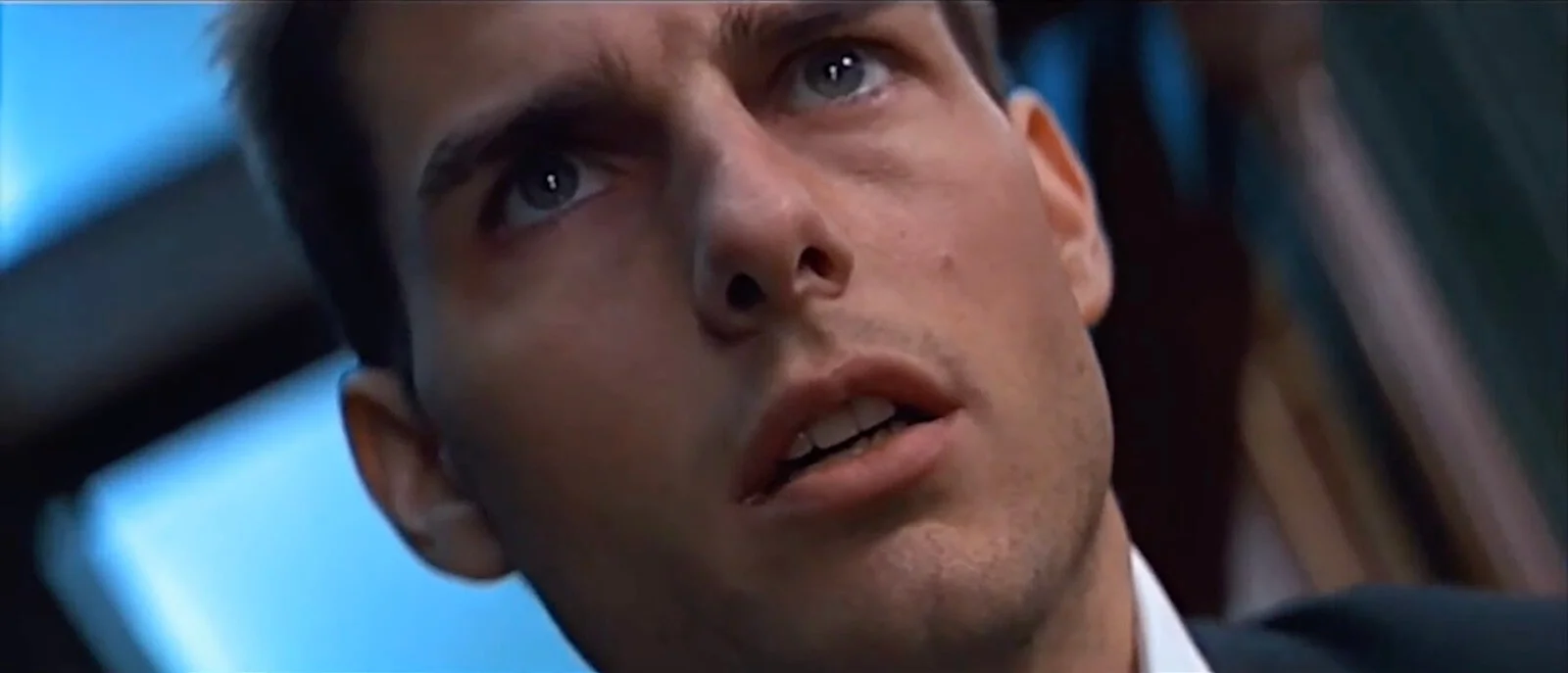

Dutch tilt on Ethan
We’ve identified the moment. Considered it. Now it’s time to enhance it. Before going on, check out the Mission: Impossible Dutch angle in an example shot list below.
When you view the shot list, make sure to click between the Layout options on the top-right to view it as a storyboard, or slideshow. For this particular Dutch tilt example, we find that the Image List and Storyboard shot list layouts best visualize the scene.
You'll notice that we color-coded the Dutch angle shots to make sure their importance is highlighted when sharing a shot list with the team.
Related Posts
the dutch angle shot
How to enhance your shots
Dutch angle is a broad term. You can add layers to these shots that will say different things to the viewer, all while keeping the common visual theme that something is amiss.
There are a few things you can do to enhance the shot:
1. Tilt Degree
A 20-degree tilt will obviously make the viewer feel differently than a 45-degree tilt. The more you tilt the more unsettling your shot becomes. Consider this when preparing your own Dutch angle, and how the imagery in your shot aligns.
2. Depth of Field
The Dutch angles De Palma uses in this scene have a very shallow depth of field. The shallow depth of field makes an already unsettling shot become claustrophobic. It ratchets up the tension.
3. Camera Level
De Palma uses different camera levels for each Dutch angle in this scene. The shot on Ethan is disorienting and claustrophobic and De Palma wants us to connect with Ethan's discomfort.
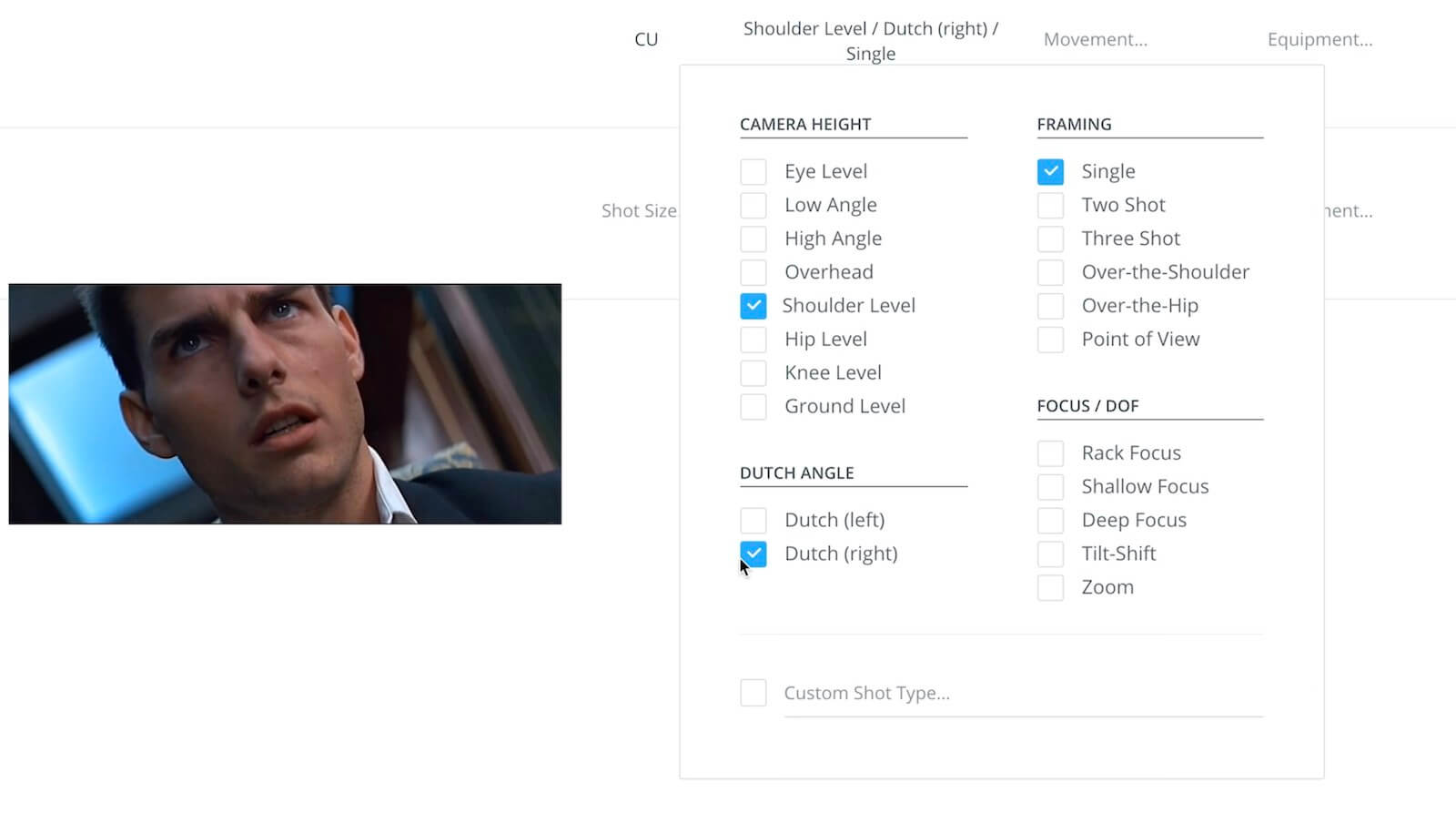
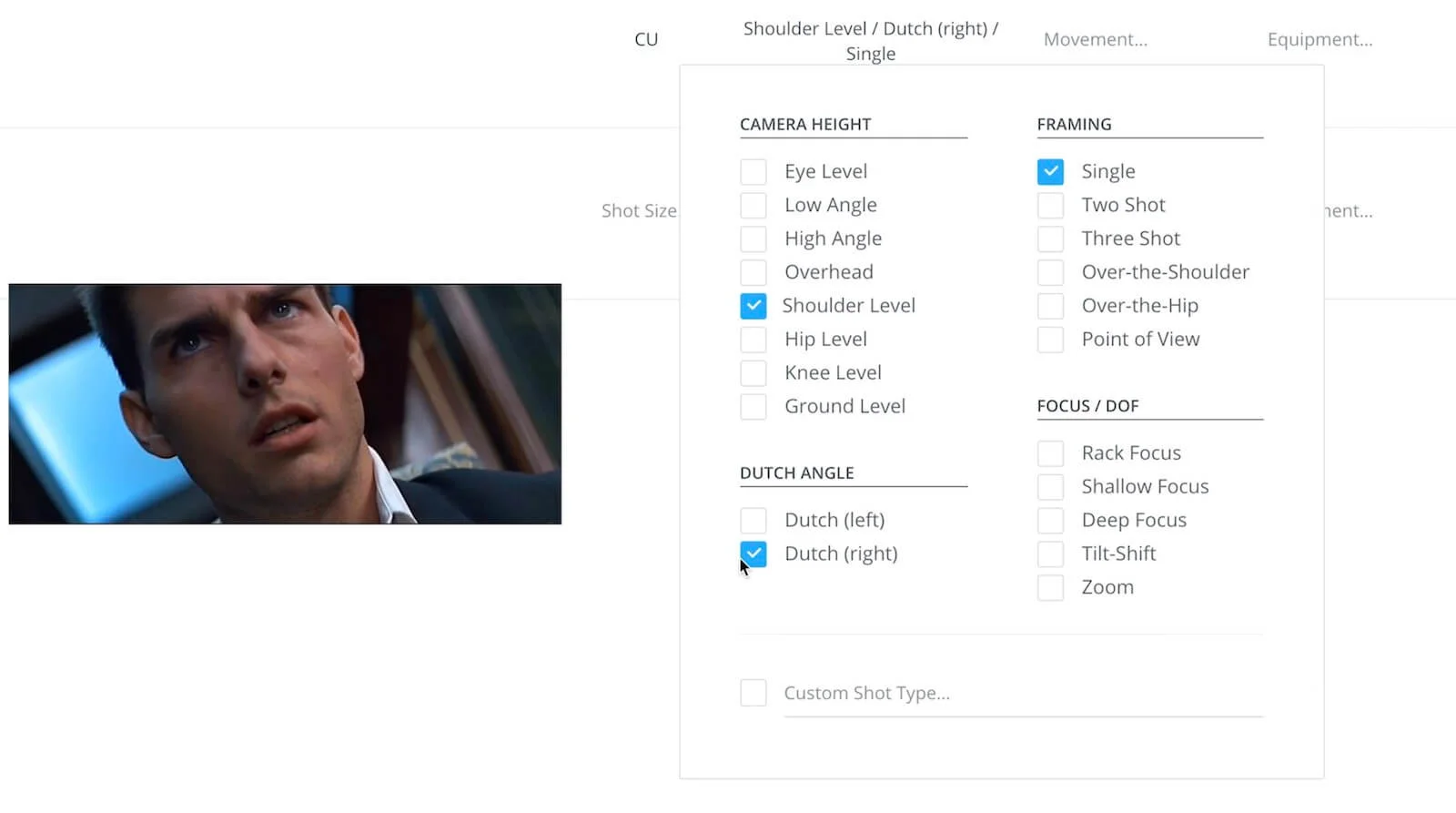

Camera Specs for Mission: Impossible
In a situation like this, you need to make sure your Dutch angle signals danger, but doesn’t go so far as to present Ethan in a negative light. He is, after all, the hero of the story. Do what De Palma does in this scene. Keep the camera close to shoulder level.
Don’t make the viewer scared of Ethan — make them scared for Ethan.
The shot on Kittridge is also disorienting and claustrophobic, but it goes a step further and presents Kittridge as hostile. Let’s see how.
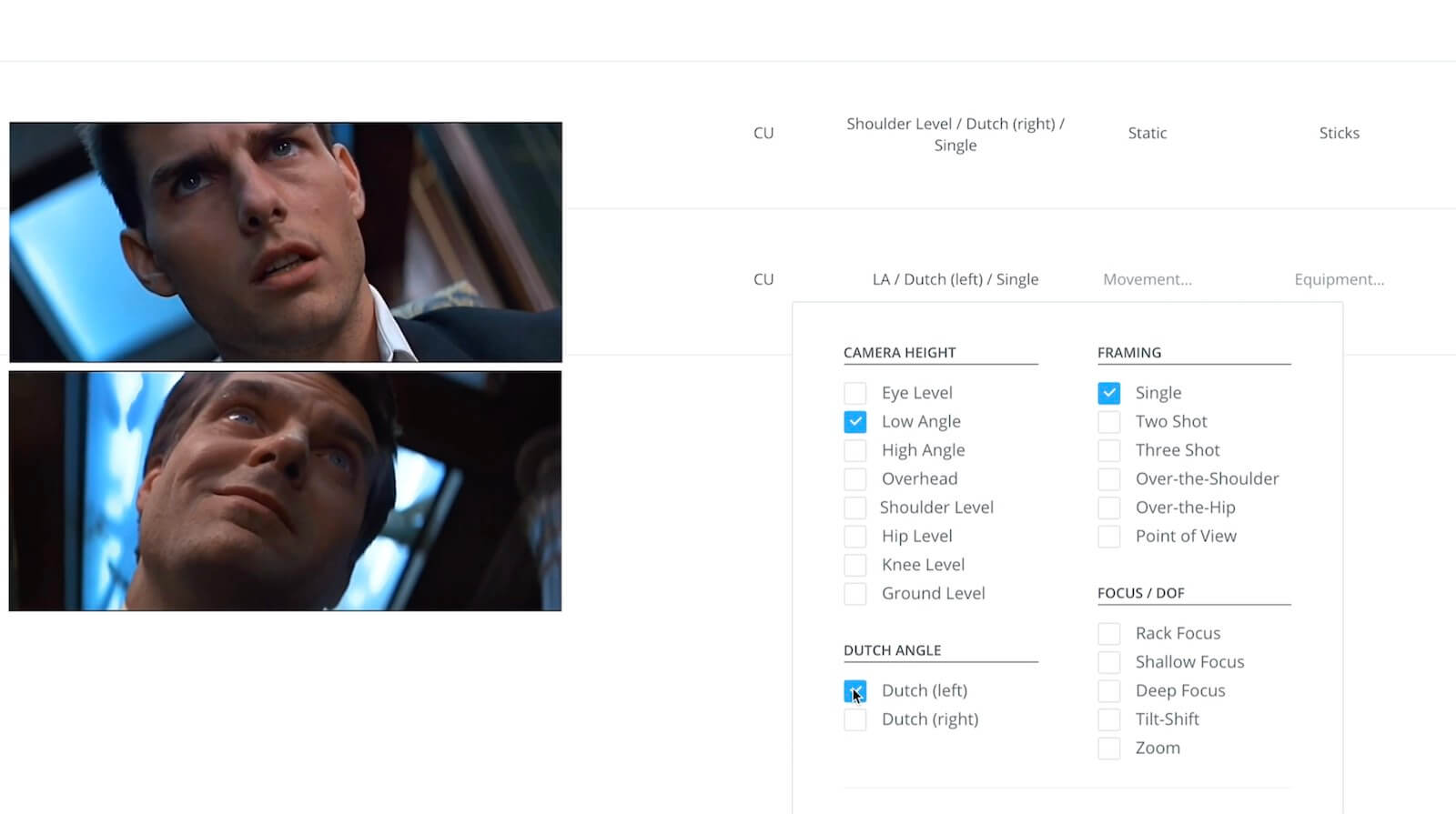
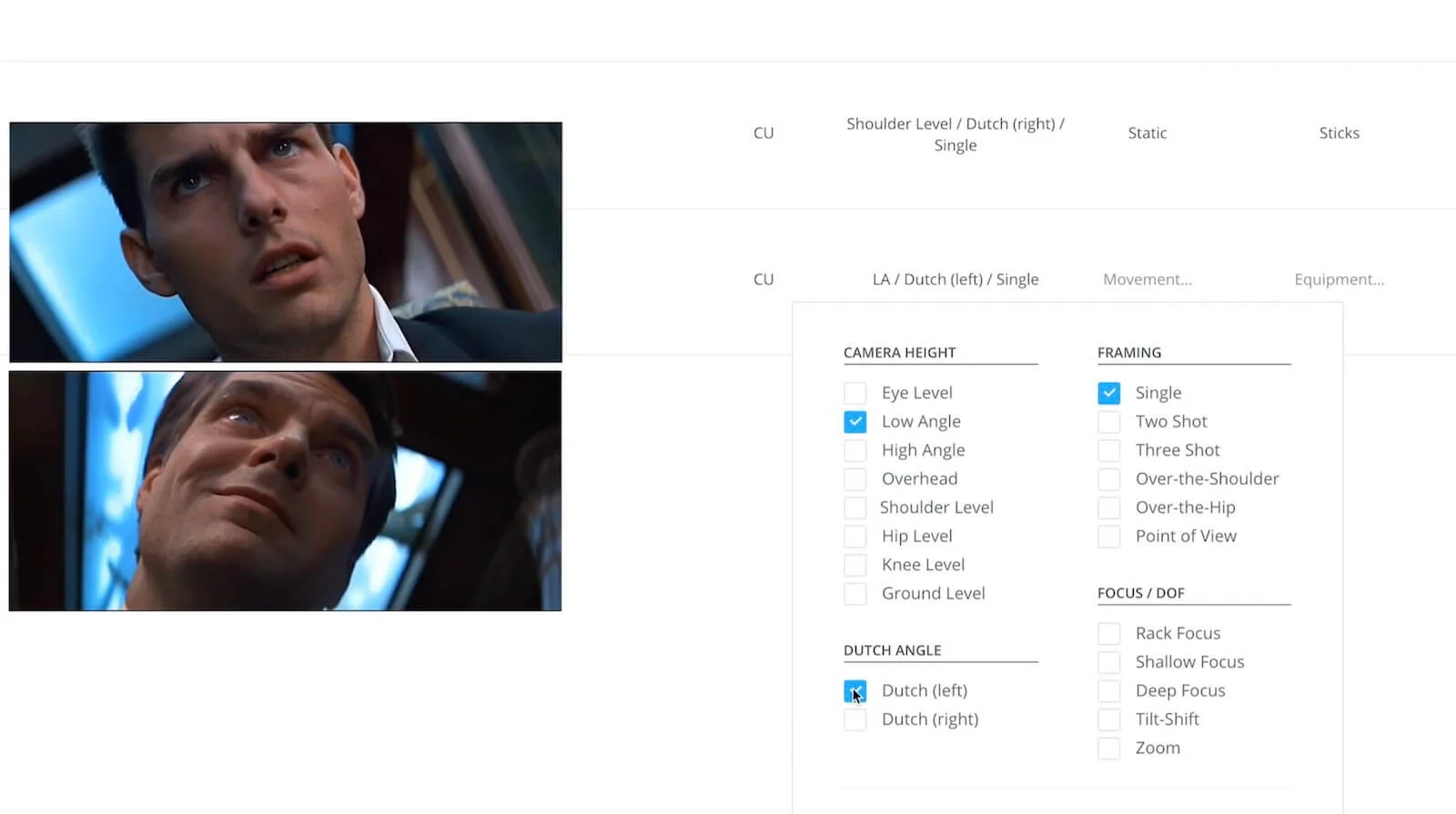

Dutch Angles shot specs in Mission: Impossible
The low angle shot empowers him, and the Dutch angle adds a sinister twist. We are scared of... Kittridge and we are scared for... Ethan.
De Palma wants these Dutch angles to make three different points:
- Something is wrong.
- Ethan can feel it.
- Ethan sees Kittridge as a threat.
Related Posts
dutch angles in film
Recapping the Dutch angle
Let’s recap:
Before you decide to use a Dutch angle, remember to:
- Identify the moments during your script breakdown.
- Consider the moments during your shot list & storyboard.
- Enhance the moments with advanced film grammar.
CAMERA ANGLES
Get Inspired. Explore More Angles.
Explore the different types of camera angles, and learn how to combine them with other shot specs for visual storytelling.
Different Types of Camera Angles
up next
More camera angles and examples
The Dutch angle is just one option for communicating with the audience. There are many types of camera angles, each with their own distinct meaning and application. Now that we know how a Dutch angle works and when to use them, let's go over the other options and how they, too, can elevate your understanding of film language.
Up Next: Every camera angle →
Showcase your vision with elegant shot lists and storyboards.
Create robust and customizable shot lists. Upload images to make storyboards and slideshows.
